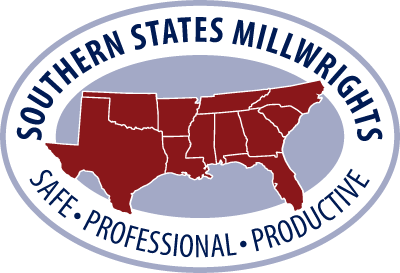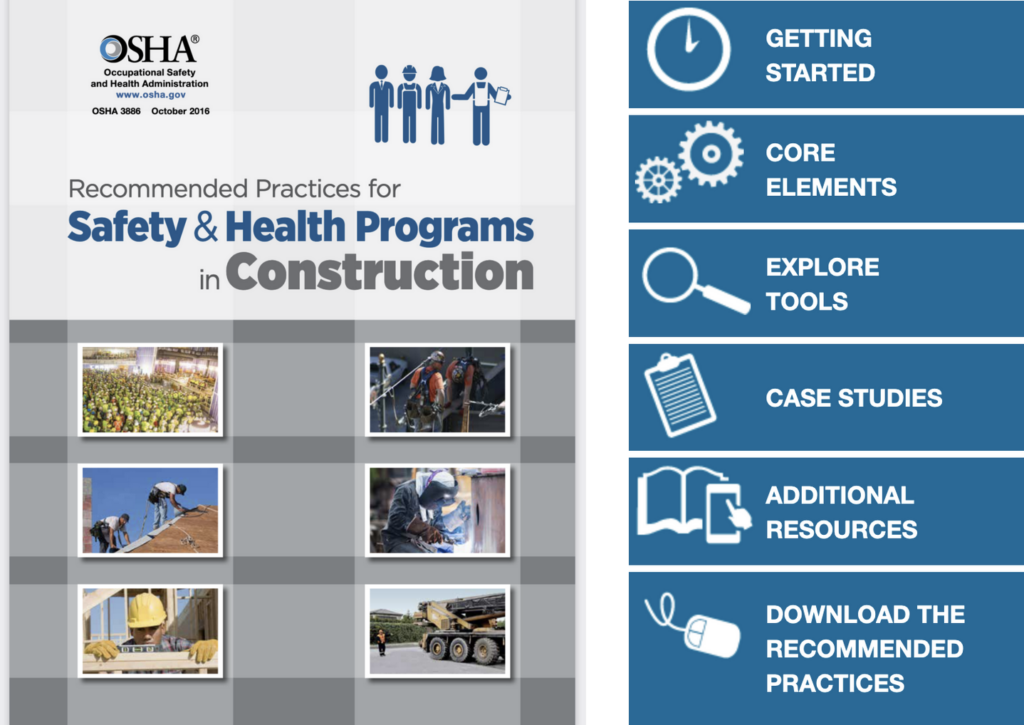Evidence shows a comprehensive safety and health program can not only prevent injuries, illnesses, and fatalities, but also reduce employers’ costs and improve production and work quality.
A written safety and health program is a document that clearly describes all of a company’s safety activities, goals, rules, processes, and procedures. Developing and implementing such a program can seem like a daunting task, but many resources are available to assist employers.
The Occupational Safety and Health Administration’s Recommended Practices for Safety and Health Programs is an excellent guide for companies developing or revising written health and safety programs. In 2016, when OSHA updated its recommended practices for the first time in three decades, the agency created a separate set of guidelines for a particular industry – construction – because of its unique challenges. In many cases, the Recommended Practices for Safety and Health Programs in Construction will be more applicable to companies that employ millwrights.
Both sets of recommendations put more emphasis on worker participation and encourage managers and other employees to collaborate to find and fix problems and prevent incidents. They also are geared for small- to mid-sized businesses.
Be sure your program includes core elements (outlined below) recommended by federal OSHA. The descriptions below are from the Recommended Practices for Safety and Health Programs in Construction.
MANAGEMENT LEADERSHIP – Top management demonstrates its commitment to eliminating hazards and to continuously improving workplace safety and health, communicates that commitment to workers and sets program expectations and responsibilities. Managers at all levels make safety and health a core organizational value, establish safety and health goals and objectives, provide adequate resources and support for the program and set a good example.
WORKER PARTICIPATION – Workers and their representatives are involved in all aspects of the program, including setting goals, identifying and reporting hazards, investigating incidents and tracking progress. All workers, including contractors and temporary workers, understand their roles and responsibilities under the program and what they need to do to effectively carry them out. Workers are encouraged and have means to communicate openly with management and to report safety and health concerns or suggest improvements, without fear of retaliation. Any potential barriers or obstacles to worker participation in the program (for example, language, lack of information or disincentives) are removed or addressed.
HAZARD IDENTIFICATION AND ASSESSMENT – Procedures are put in place to continually identify workplace hazards and evaluate risks. Safety and health hazards from routine, non- routine and emergency situations are identified and assessed. An initial assessment of existing hazards, exposures and control measures is followed by periodic inspections and reassessments to identify new hazards. Any incidents are investigated with the goal of identifying the root causes. Identified hazards are prioritized for control.
HAZARD PREVENTION AND CONTROL – Employers and workers cooperate to identify and select methods for eliminating, preventing or controlling workplace hazards. Controls are selected according to a hierarchy that uses engineering solutions first, followed by safe work practices, administrative controls and finally personal protective equipment (PPE). A plan is developed that ensures controls are implemented, interim protection is provided, progress is tracked and the effectiveness of controls is verified.
EDUCATION AND TRAINING – All workers are trained to understand how the program works and how to carry out the responsibilities assigned to them under the program. Employers, managers and supervisors receive training on safety concepts and their responsibility for protecting workers’ rights and responding to workers’ reports and concerns. All workers are trained to recognize workplace hazards and to understand the control measures that have been implemented.
PROGRAM EVALUATION AND IMPROVEMENT – Control measures are periodically evaluated for effectiveness. Processes are established to monitor program performance, verify program implementation and identify program shortcomings and opportunities for improvement. Necessary actions are taken to improve the program and overall safety and health performance.
COMMUNICATION AND COORDINATION FOR EMPLOYERS ON MULTIEMPLOYER WORKSITES – General contractors, contractors and staffing agencies commit to providing the same level of safety and health protection to all employees. General contractors, contractors, subcontractors and staffing agencies communicate the hazards present at the worksite and the hazards that work of contract workers may create on site. General contractors establish specifications and qualifications for contractors and staffing agencies. Prior to beginning work, general contractors, contractors and staffing agencies coordinate on work planning and scheduling to identify and resolve any conflicts that could impact safety or health.

